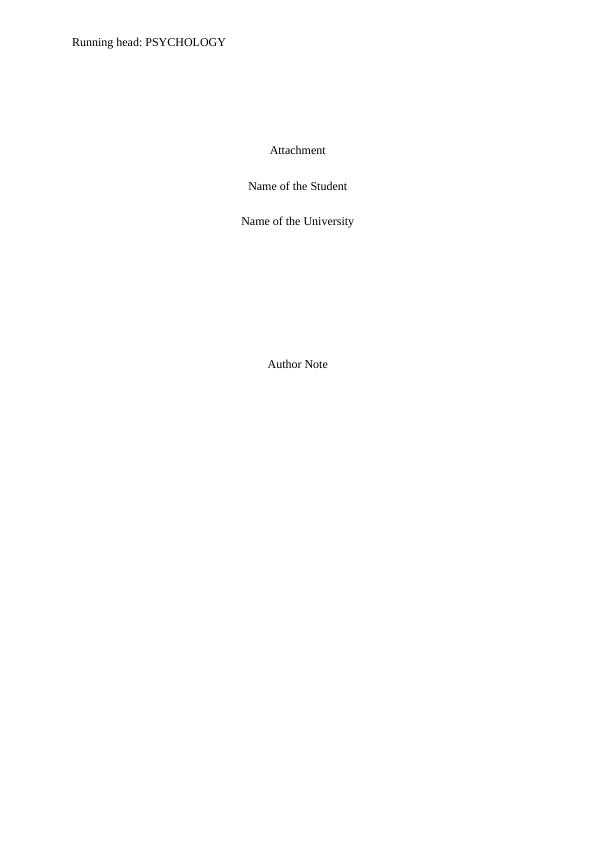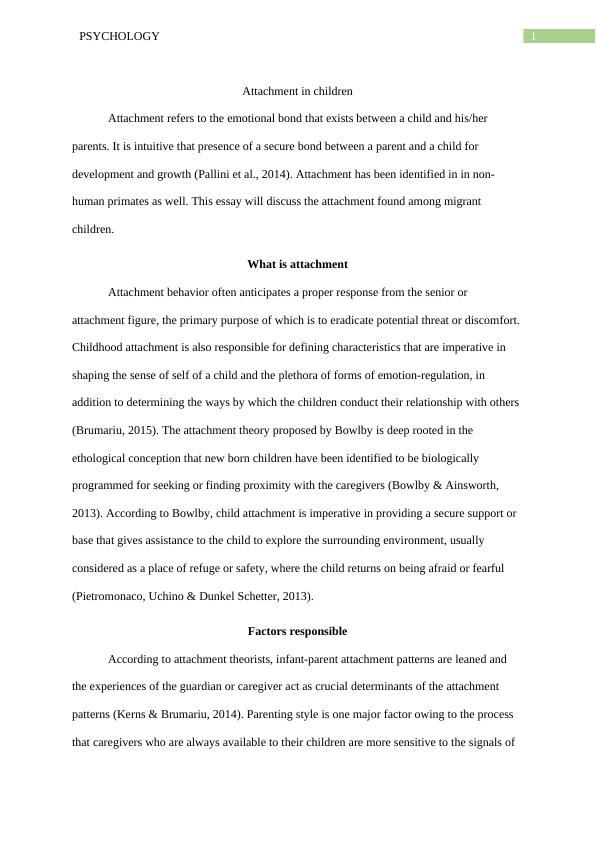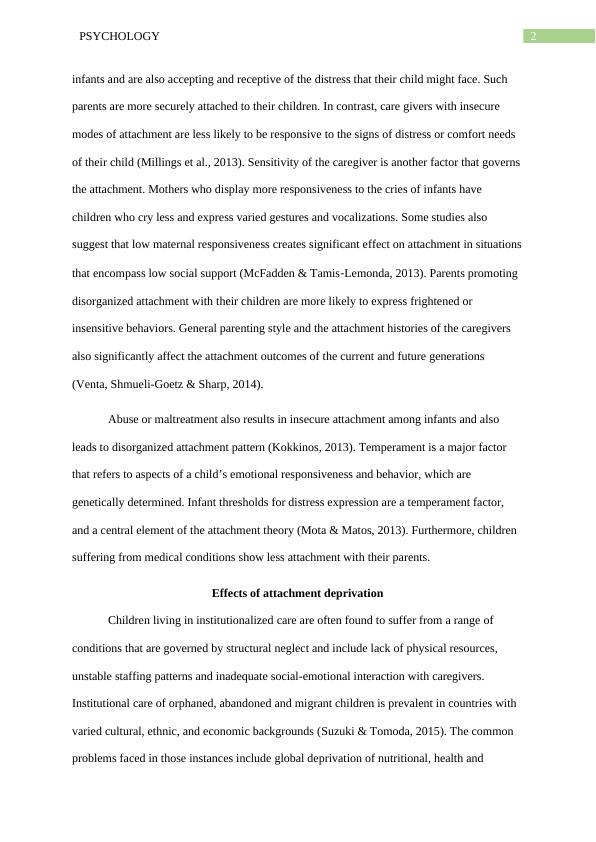Attachment in Children: Understanding the Importance of Secure Bonding
6 Pages1517 Words87 Views
Added on 2023-06-10
About This Document
This essay discusses the importance of attachment in children and how secure bonding with parents affects their development. It covers factors responsible for attachment patterns and effects of attachment deprivation. The essay also highlights the attachment theory proposed by Bowlby and the impact of abuse or maltreatment on attachment patterns.
Attachment in Children: Understanding the Importance of Secure Bonding
Added on 2023-06-10
ShareRelated Documents
End of preview
Want to access all the pages? Upload your documents or become a member.
Topical research on Attachment theory of Psychology
|7
|1532
|419
Attachment Theory and Gender Differences in Secure Attachment Style
|20
|3103
|189
Theories of Attachment Development: Evaluating Bowlby's Evolution Theory and Secure/Disorganized Attachment Theory
|9
|2238
|196
Essay: Principles and application of attachment theory
|11
|1699
|353
Attachment in Early Childhood Education
|9
|2380
|62
Imporatance of Secure Attachment in Human lifespan PDF
|9
|2311
|88



